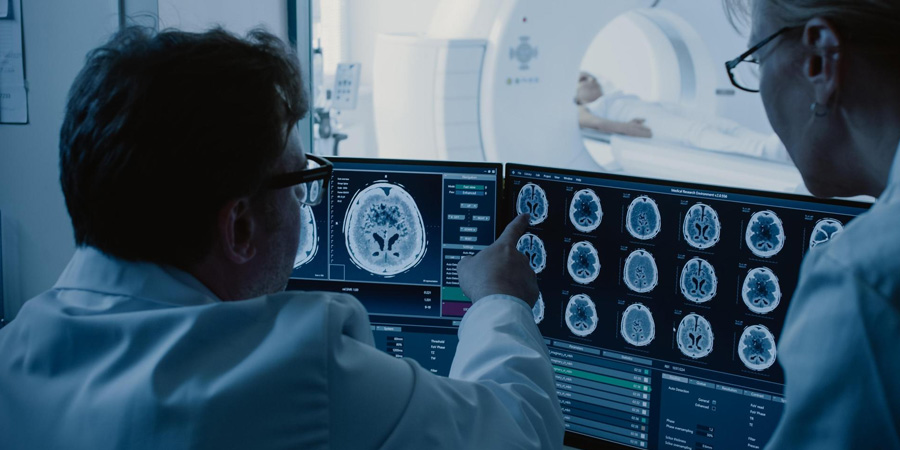
Every year, World Brain Tumor Day is observed on June 8. The purpose is to spread awareness about the condition, brain tumor symptoms, and how early intervention can help.
This guide is an attempt in this direction so that readers and their families can look out for brain tumor symptoms and understand when to seek expert help.
The abnormal growth of brain cells or their surrounding structures is called a brain tumor. These tumors can be either malignant or benign.
Malignant or cancerous brain tumors are those that grow aggressively. Consequently, these fast-growing cells invade the surrounding tissues and can spread to other parts of the brain and body. Benign or non-cancerous brain tumors are characterized by a slow pace of growth. These usually do not spread to other parts of the brain or body, but the tumor itself can put a lot of pressure on surrounding tissues, leading to some serious issues.
That’s true! For most cancers and other chronic diseases, time matters. When tumors are small and have yet to impact surrounding tissues, they can be treated faster and more effectively, without damaging the healthy cells.
Delayed brain tumor diagnosis can make the treatment complicated and long-drawn. In case of cancerous tumors, the surrounding cells get affected, and there could be irreversible damage. Usually, delayed diagnosis occurs when brain tumor symptoms are either subtle, remain undetected, or are mistaken for other ailments.
There are visible brain tumor warning signals. Brain tumor symptoms depend on the size of the tumor, location, and type. Some of the common symptoms are -
The difference between normal and brain tumor-related headaches is that the headaches grow worse and severe with time. The frequency also increases in the case of a brain tumor.
Many patients suffer from sudden seizures even though they have no previous history of epilepsy. This could be a sign of early brain tumor detection.
The feeling of nausea is a common brain tumor warning sign, as long as it is not related to any gastrointestinal issue. Some patients get headaches accompanied by vomiting.
Brain tumor is often accompanied by blurred vision, double vision, hearing loss, or slurred speech, etc, on one side due to pressure on areas that control sensory organs and language areas.
Cerebellum tumors may often lead to loss of balance while walking or unexplained clumsiness.
This is another common brain tumor symptom that occurs when the tumor presses on motor-control centers. In such cases, the numbness occurs on one side of the body.
These are a few brain tumor warning signs. If you know someone who is experiencing these symptoms persistently, it is crucial to consult with a specialist at Cancer Therapy India.
Brain tumor diagnosis typically involves multiple steps and a mix of different pathological and imaging tests. These include -
The diagnosis will start with assessing the nuero responses of the individual. Doctors assess the hearing and vision skills, motor skills and reflexes, balance and coordination. This is done to ascertain the tumor location.
This is the most trusted method for brain tumor diagnosis. Magnetic Resonance Imaging uses strong magnetic and radio waves to produce images that give a detailed view of the brain and tumor. To understand the the type, whether benign vs malignant brain tumor, contrast MRI is used. For more information, doctors might suggest functional MRI or fMRI, perfusion, and MR Spectroscopy.
CT Scan is used in combination with MRI in emergency situations for better understanding of the tumor and determine the most suitable treatment option.
In case a tumor is diagnosed, a biopsy is advised to determine whether it is benign or malignant. A biopsy can be surgincally or using a stereotactic needle.
Molecular testing is used for detecting malignancy of brain tumors. The process analyzes genetic mutations, biomarkers, and molecular alterations in tumor cells. The process is primarily use for identifying the grades and types of tumors.
Doctors might also suggest a couple of other tests including PET scans, EEG, and lumbar punctures based on the suspected type of tumor.
Here are some of the key differences between the two types of brain tumors.
| Feature | Benign | Malignant |
| Growth Rate | Slow | Fast |
| Spread | Localized usually, not spreading to other tissues | Spreads to nearby tissues |
| Risk of Recurrence | Low | High |
| Surgery Outcome | Can be removed completely depending upon location of tumor | Will require regular follow-ups. |
At Cancer Therapy India, we have committed ourselves to spreading knowledge about brain tumors because we believe that by doing so, we empower people. Understanding early brain tumor warning detection can improve the chances of recovery and outcomes.